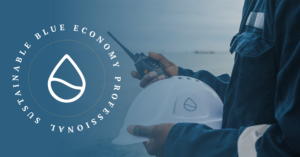
Post by: Amit Thusu, Program Officer on Clean Development Mechanism (CDM), United Nations
Carbon markets are unlikely to merit even a single mention in a Paris climate change agreement, but the idea of trading emissions has not gone away. The private sector and industrial sectors have as of now realized that not addressing climate change will be the huge risk to the businesses. They have realized if they do not voice their opinions now, governments and theoretical think tanks and policy makers, with little knowledge of businesses will load them with a climate solution that would harm the businesses and still not mitigate climate change.
Governments prefer domestic action over international Carbon markets as it would allow them to directly control climate finance. This is one of the reasons why CDM is not preferred by governments. However international Carbon markets and pricing Carbon would have offered private sector businesses more transparency and freedom from bureaucratic hurdles and yet provide flexibility to reduce or buy Carbon at low cost. But the interests of government and private sector seem different.
However, Market advocates have simply found new code-words for referring to a practice that guarantees a fight in international climate negotiations. So they’ve hedged their bets – canvassing new mechanisms without naming them, dreaming up accounting rules for schemes that have yet to be agreed, or just referring to a vague system of ‘transfers’ whose meaning can be fought out once the Paris spotlight fades. Whatever the outcome, the public profile of carbon trading will be marginal to any agreement coming out of Paris agreement.
Carbon markets collapse, alongside the Kyoto Protocol itself, at COP17 in Durban in 2011. But confusing these market contractions for birth pangs, a number of developed countries still used that conference to push for the creation of a , New Market Mechanism. The EU led the charge, hoping to scale up carbon markets by replacing the project-by-project schemes from the Kyoto Protocol with a new system covering whole industrial sectors at a time.
But in the face of increased opposition led by Bolivia and its allies in ALBA (a Latin American country grouping) and the wider G77 group of developing countries, the New Market Mechanism was stillborn. A parallel ‘Framework for Various Approaches’, which amongst other things saw discussions on how the UNFCCC might provide common accounting rules for carbon markets created by countries and regions themselves, met a similar fate. Check; Kroger Weekly Ad, ALDI Weekly Ad, ALDI Catalogue, IGA Catalogue, Meijer Weekly Ad, Publix Weekly Ad, Coles Catalogue, Supercheap Auto Catalogue. As renewed discussions have fizzled into inconclusiveness with each successive COP, attention has increasingly turned to the role of markets in the negotiations for a new climate treaty.
With the development of new markets blocked in UN climate talks for close to four years, carbon trading enthusiasts have come to Paris with a new strategy. They have simply replaced the words ‘carbon markets’ with references to ‘international transferrable mitigation outcomes’ (and variations on that theme), with the even vaguer language of ‘cooperative approaches’ proposed as a backup. The Clean Development Mechanism is out, but a potential ‘Mechanism to Support Sustainable Development’ is still up for discussion.
Carbon markets are a bargaining chip that could be traded until the last minute for other aspects of the Paris agreement, making it hard to predict with any certainty what will happen at COP21.
If the core proposals on markets were to be agreed, then we would leave Paris with a new market mechanism or several mechanisms written into the architecture of the international climate agreement – extending the failed regime of the CDM and paving the way for a UN-administered scheme that covers whole economic sectors (rather than individual projects) in years to come. Forest carbon markets (under the guise of Reducing Emissions from Deforestation and Degradation, or REDD+) would receive a boost, although most of the architecture for those was already signed off in Warsaw.
Common carbon accounting rules would be established that would make it easier to link up existing carbon markets, like the EU ETS and California cap-and-trade programme. This might be spun as a step on the road to a ‘global carbon market’ that could price pollution everywhere. The reality would be more messy: a complex web of rules as to how carbon is calculated, opening the door to more of the unscrupulous dealings that have dogged carbon markets to date.
A more modest Paris agreement would leave some or all or these elements on the table, recognizing simply the principle that emissions are ‘transferrable.’ That outcome would leave the door open to carbon markets under the UN, but postpone the debate another year.
There remains a chance, too, that an agreement will be made without reference to carbon markets at all. That would appear to seal the fate of the existing UN climate schemes, whose mandate runs out with the Kyoto Protocol, and (at least for now) put a lid on the prospect of new ones.
Around half of these plans as mentioned in INDCs state an intention to use international carbon markets, but there is a massive disparity between the large number of developing countries hoping to sell carbon offsets and the small number of developed countries (Canada, Japan, New Zealand and Switzerland) willing to buy them.
At the same time, increasing numbers of countries are organizing domestic carbon markets, with China recently announcing that it plans a nationwide scheme starting in 2017, and South Korea launching a domestic market at the start of this year.
The effort to lure speculators back to the market is what’s behind a big push on ‘linking’ carbon markets. Linked markets have more ‘liquidity’ – in essence, a greater number of trades happening more quickly, offering more chances for the types of bets that speculators thrive on.
Whether or not the Paris conference agrees on common carbon accounting rules, the overall trend is towards a complex system of interlinked carbon markets.
In short, the road through Paris looks likely to leave the carbon market menace in place for many years to come. The words markets may not figure in the text of the Paris agreement, but there’s a good chance that a placeholder could be found to allow their return in future.
About the Author
 Amit Thusu, Program Officer on Clean Development Mechanism (CDM), United Nations
Amit Thusu, Program Officer on Clean Development Mechanism (CDM), United Nations




